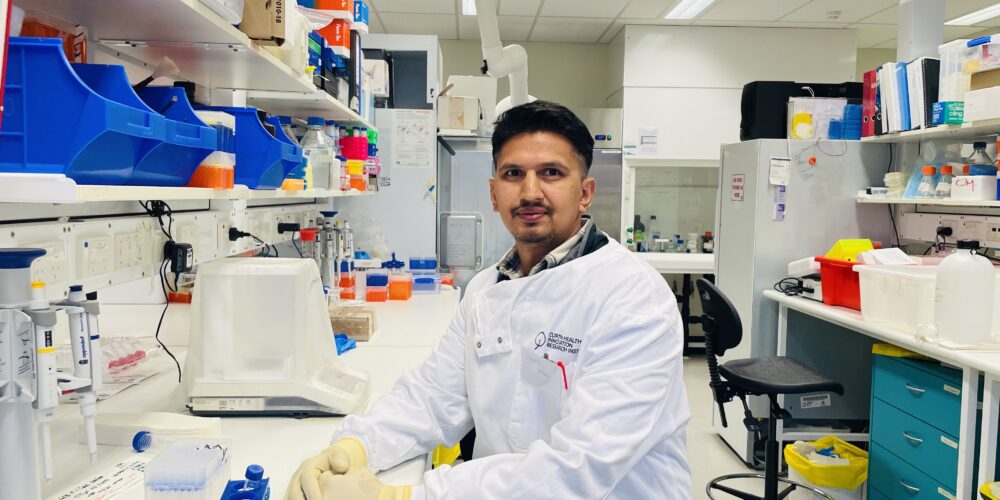Stealth surveillance system uses radio astronomy technology to detect artificial objects in space

Researchers from the International Centre for Radio Astronomy Research (ICRAR) have developed a low cost, portable sensor system which can be used to detect space junk, satellites, and aircraft.
The portable Space Domain Awareness (SDA) project is part of a Collaborative Research Grant funded by the Government of Western Australia’s Defence Science Centre. Developed by researchers from ICRAR’s Curtin University node, the SDA project translates the technologies used in radio astronomy to create an inexpensive, flexible, and portable passive radar system.
Unlike conventional radar systems, which deliberately transmit a known signal, a passive radar system makes use of third-party transmissions such as broadcast radio and TV signals to detect objects without revealing its own existence.
Associate Professor Randall Wayth from ICRAR-Curtin is the project’s lead researcher and says the 32-antenna system could be configured for several different applications.
“Our system is highly portable, sensitive, and invisible to many typical or commercial detection systems, making it ideal for deployment in remote environments and Defence scenarios,” said Associate Professor Wayth.
ICRAR researchers prototyped their portable sensor system based on existing radio astronomy technology, demonstrating its use for covert surveillance that can be operated stand-alone or integrated into a wider network.
“In building this prototype, ICRAR has taken technologies and expertise developed in the course of our core business of radio astronomy, and applied them to a Defence purpose,” said Associate Professor Wayth.
“The techniques we use to image the distant Universe translate directly to detecting objects closer to home.”
A key consideration for the project was to motivate and stimulate the development of a Western Australian manufacturing supply chain for critical components. To achieve this, the project leveraged ICRAR’s strong connections with Western Australia’s engineering and manufacturing industries to respond to Defence’s current and emerging capability needs. This demonstrated ICRAR’s support for local jobs and WA’s manufacturing industry.
The project has provided stepping stones toward a larger, fixed, and dedicated SDA facility to be built and operated in partnership with Nova Systems. Construction has commenced at Nova’s Peterborough site in South Australia, using a receiver system based on the design, development, and testing of the portable SDA system.
The research team worked with the WA Government’s Development WA, to deploy the portable SDA system to the Australian Automation and Robotics Precinct (AARP) at Neerabup. This arrangement raised awareness of the state’s research and development capabilities in the field of SDA and provided a showcase for WA Government facilities designed to support research and development.
Looking to the future, Associate Professor Wayth says discussions with collaborators from industry and government are ongoing, with the aim of achieving real-time data processing capability, improving the potential for application to various Defence and security challenges.
This research was supported by the Defence Science Centre, an initiative of the State Government of Western Australia.



